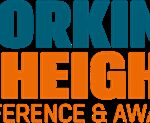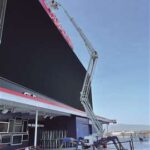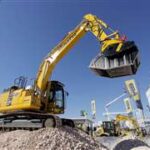Let’s be honest:
Some jobs don’t just need a step ladder.
They need altitude.
Whether you’re installing stadium lights, trimming trees in a public park, or bolting steel beams on a new high-rise, you need to get up there—safely, steadily, and high enough to see your house from here.
That’s where boom lifts shine.
But just how high can they go?
Strap in. We’re going vertical.
🚀 Short Answer: Over 180 Feet
Yes, you read that right. Some boom lifts—especially telescopic (straight) boom lifts—can reach over 180 feet (that’s about 55 meters) of working height.
That’s:
-
Taller than a 16-story building
-
Higher than most crane operators sit
-
Enough to make your stomach flutter (don’t worry—safety gear included)
🧠 Quick Definitions
| Term | What It Means |
|---|---|
| Platform Height | Height of the lift’s working basket |
| Working Height | Platform height + 6 feet (average standing user) |
So if a boom lift has a platform height of 135 ft, its working height is roughly 141 ft.
Most manufacturers quote the working height—because they know you’ll be standing up there with tools.
📏 High-Ranking Boom Lifts (Literally)
Here are a few heavy hitters:
| Model | Platform Height | Working Height |
|---|---|---|
| Genie SX-180 | 180 ft | 186 ft |
| JLG 1850SJ | 185 ft | 191 ft |
| XCMG XGS70K | 229 ft (70 m) | 235 ft |
| Dingli BT44ERT | 144 ft (44 m) | ~150 ft |
These beasts are designed for large-scale industrial work like:
-
Wind turbine maintenance
-
High-rise construction
-
Bridge and tunnel inspections
-
Stadium installation
If your job involves clouds—you’re in the right zone.
💡 But Not Every Job Needs the Stratosphere
Most jobs don’t require 180 feet of boom.
In fact, the average boom lift working height for standard construction and maintenance falls between 30 and 85 feet.
Here’s a range breakdown:
-
30–45 ft → Light maintenance, tree trimming, residential/commercial work
-
60–85 ft → Warehousing, steel erection, signage installs, outdoor fit-outs
-
100–185 ft → Big-boy territory: infrastructure, skyscrapers, power grid access
Pro tip: Always go 10–15% higher than your actual need to allow for safe positioning and maneuvering.
🛞 Can They Still Drive at Full Height?
Some boom lifts (like the Genie S-85 XC or JLG 860SJ) allow you to drive while fully elevated—but only under strict surface and slope conditions.
That’s a game changer when:
-
Working along building facades
-
Painting or pressure washing long walls
-
Installing lighting or signage on a stretched run
Always read the manufacturer’s specs before getting mobile at 80 feet!
🦺 Is It Safe to Go That High?
Yes—if you follow protocol.
Modern boom lifts are packed with:
-
Tilt sensors
-
Overload alarms
-
Emergency lowering systems
-
Fall arrest anchor points
-
Smooth joystick proportional controls
As long as the machine is on stable ground, operators are trained, and harnesses are secured—you can safely work at heights that would make most people’s knees wobble.
🙈 Should You Look Down?
Well… that’s up to you.
If you’re cool with heights—enjoy the view. You’ve earned it.
If not—maybe just focus on the control panel and that perfectly aligned anchor bolt.
Either way, remember:
You’re standing on a platform engineered for this.
It’s not a bucket. It’s a boom-powered balcony.
🏁 Final Thoughts
So, how high can a boom lift go?
👉 Real answer: Up to 180+ feet
👉 Practical answer: As high as your job demands
👉 Emotional answer: High enough to test your bravery—and your harness
Boom lifts don’t just lift people.
They lift projects, confidence, and whole new possibilities.
So go ahead—go up.
Just maybe don’t look down too soon.




